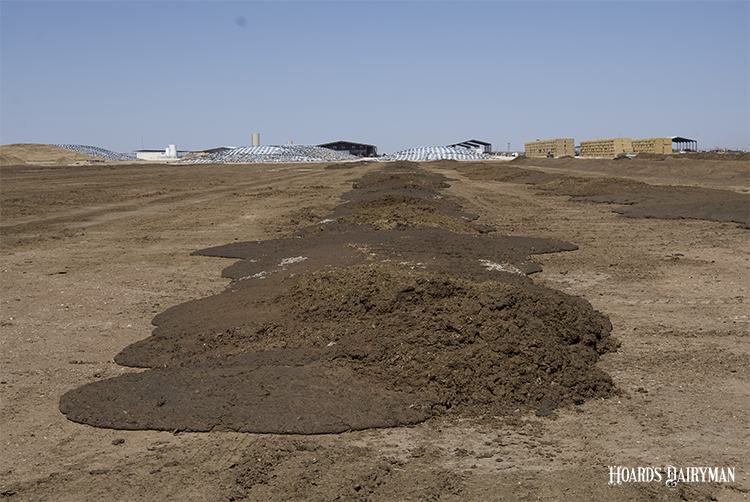
It’s a simple concept, but doing composting well is not just a matter of letting soiled material sit and cure, said Brian Dougherty during an Iowa State University Extension webinar. Instead, he described that composting must be thought of as the biological decomposition of organic matter under controlled conditions. Specifically, certain temperatures and times. That’s when you get a stable product that reduces farm waste and can serve as a useful fertilizer.
Dougherty, a field ag engineer, outlined five key principles necessary for a compost pile to reach those specific conditions. He first explained that the pile will begin in a mesophilic phase, which is when temperatures reach 50°F up to 110°F. Then, as the temperature climbs up to 160°F, the pile is in a thermophilic phase where heat-loving bacteria thrive. This is where most of the decomposition work is done, Dougherty said, before the pile cools down into a stable curing phase. The timeline for each stage will vary due to time of year, weather, and material of the pile.
The first principle of composting is moisture, Dougherty outlined. He recommended an ideal level of 50% to 60% but recognized that there is a workable range. At the very least, keep moisture above 40% to give the microbes enough moisture to work and below 65% to avoid pore space filling with water.
Why is pore space important? “We want this to be aerobic composting,” Dougherty explained, identifying oxygen as a critical component for efficient composting and minimizing odors. Anaerobic composting leads to leaching and odor concerns.
“That being said, there’s no real way to measure the oxygen content on the farm,” Dougherty continued. It must be managed by using the right particle size and building the windrow in a way that facilitates oxygen flow. Windrow size will depend on your site and equipment, but he said a typical manure pile may be 8 to 16 feet wide. Height should be about half of the row’s width.
Vary particle size to promote porosity and encourage oxygen flow, Dougherty said, advising that materials be between 1/8th of an inch to 2 inches in diameter. Smaller particles will break down faster, while larger ones will decompose more slowly.
The materials you use will also affect the pile’s carbon-to-nitrogen ratio, which is necessary for decomposition. Generally, Dougherty recommended a ratio of between 20 and 30 to 1. Excessive carbon will slow down the process, while more nitrogen will cause odor problems.
To determine your ratio, find the ratios of the specific materials you are using. “Match up the C:N ratio of your feedstock — whatever you’re going to blend your manure or carcass with — to the material you’re trying to compost,” Dougherty said. “It’s a little bit art, a little bit science, a little bit trial and error to get that to where you want it to be.”
Doing all of these things right will help you reach the right temperatures. Doughtery said 135°F is needed to kill pathogens, and 145°F kills weed seeds. Decomposition won’t occur under 110°F, but don’t let the pile get too hot because at temperatures over 160°F, microbes will not function. If temperatures begin nearing that level, it’s time to turn the pile.
Even though it requires attention to detail, composting can be a convenient way for farms to deal with manure and mortalities. Keep moisture, oxygen level, particle size, carbon-to-nitrogen ratio, and temperature in mind to make it a valuable tool for your farm. “If you can manage those five things, you can successfully compost,” Dougherty said.








